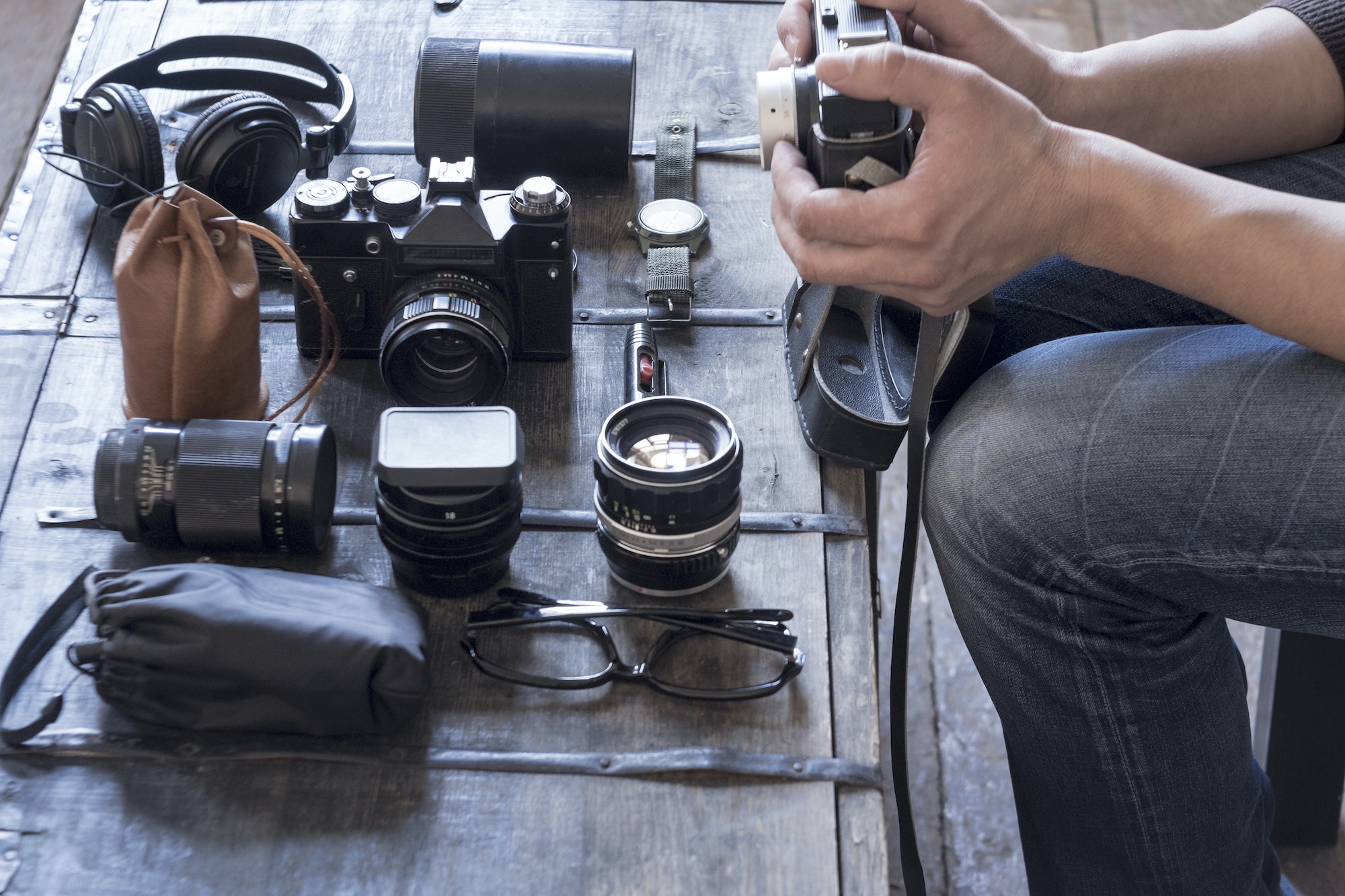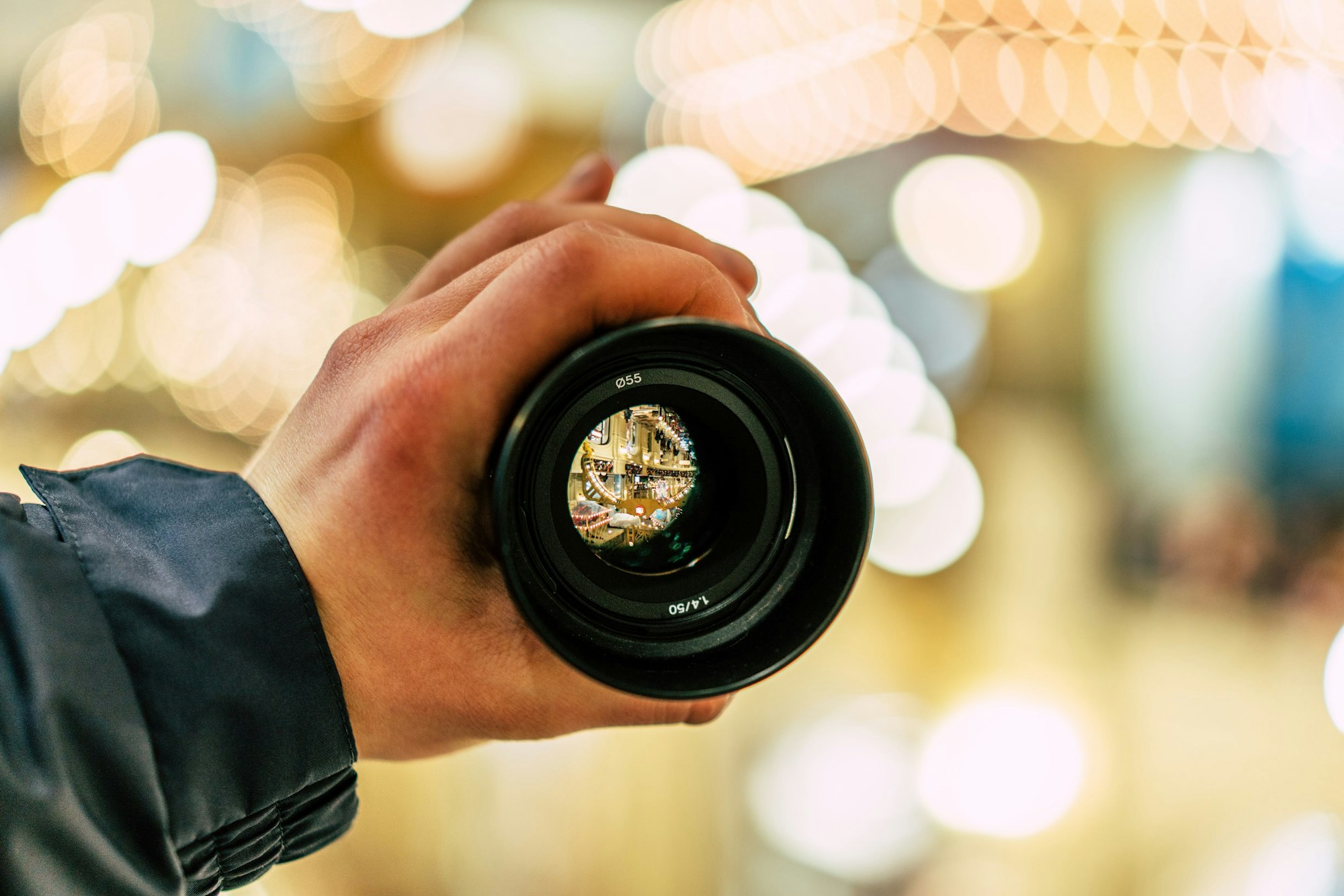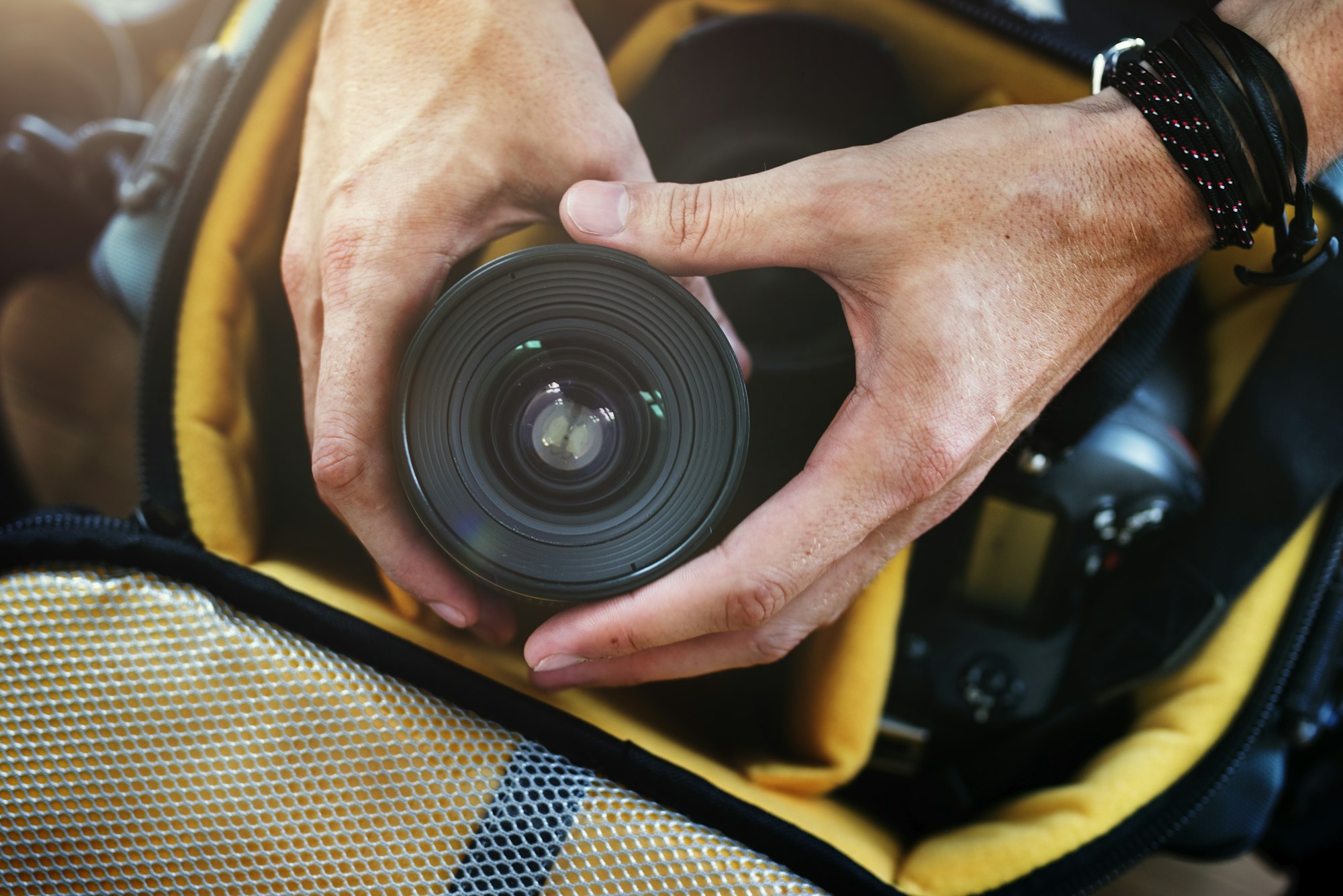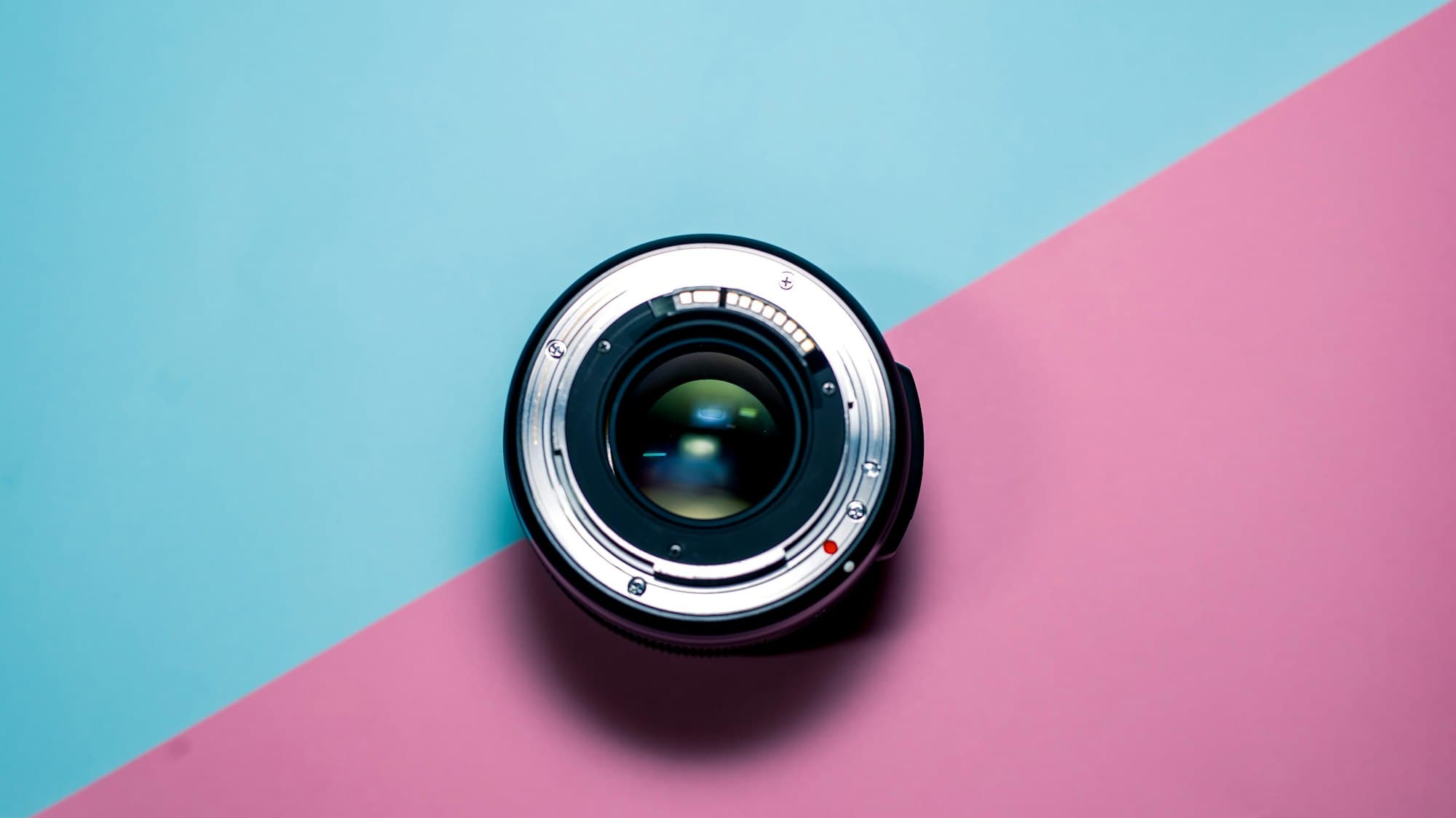
Prime vs. Zoom Lenses: Which is Best for Street Photography?
The Lens Dilemma
Picture this: You're about to head out for a day of street photography in a bustling city center. As you pack your gear, you pause, hand hovering between two lenses - a trusty 35mm prime and a versatile 24-70mm zoom. Which one should you choose?
This scenario encapsulates one of the most common dilemmas faced by street photographers: prime or zoom lens? Each has its strengths and limitations, and the choice can significantly impact your shooting style and the images you create. In this comprehensive guide, we'll explore the pros and cons of both prime and zoom lenses for street photography, helping you make an informed decision for your next urban adventure.
Understanding Prime Lenses
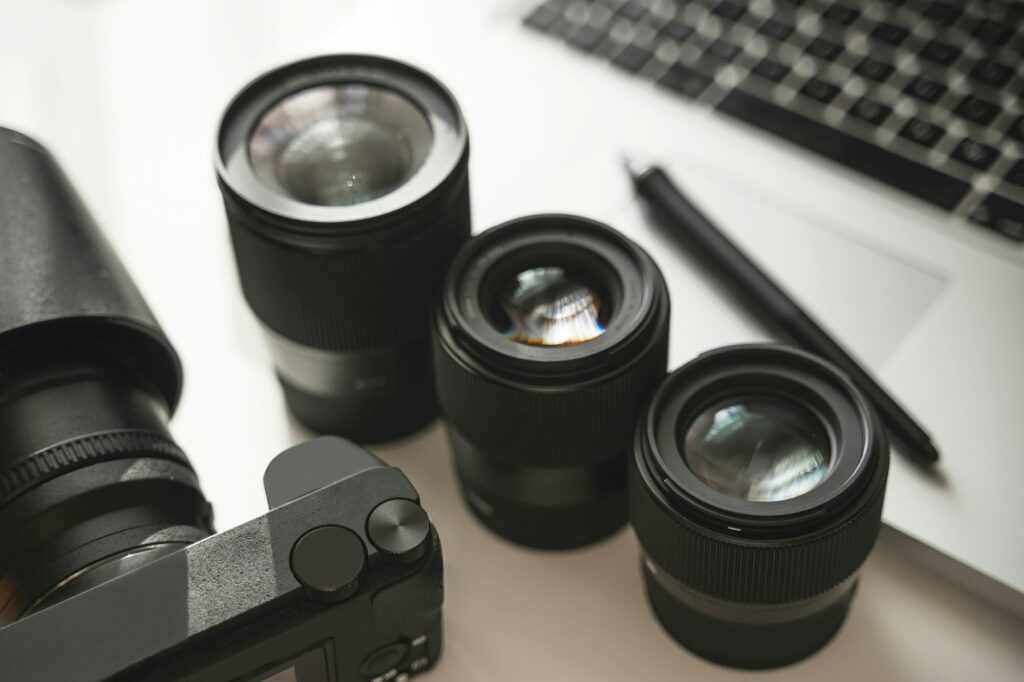
The Fixed Focal Length Advantage
Prime lenses have a fixed focal length, meaning you can't zoom in or out. Common focal lengths for street photography include 35mm, 50mm, and 28mm. While this might seem limiting, many street photographers swear by primes.
I once met a veteran street photographer, let's call him Jack, who had been using the same 35mm prime lens for over a decade. "It's become an extension of my eye," he told me. "I can visualize the frame before I even raise the camera to my eye."
Optical Quality and Low-Light Performance
Prime lenses often offer superior optical quality and perform better in low-light situations due to their wider maximum apertures.
A photographer friend of mine, Sarah, loves using her 50mm f/1.4 prime for night street photography. The wide aperture allows her to capture vibrant nightlife scenes without resorting to high ISO settings, resulting in cleaner, sharper images.
The Stealth Factor
Prime lenses are typically smaller and less obtrusive than zoom lenses, which can be advantageous for discreet street photography.
I once watched a street photographer work a busy market using a small camera and a pancake prime lens. He was able to blend into the crowd effortlessly, capturing candid moments without drawing attention to himself.
The Case for Zoom Lenses

Versatility in Framing
Zoom lenses offer the flexibility to adjust your focal length on the fly, allowing you to capture both wide street scenes and close-up details without changing lenses.
A street photographer I know, Mike, swears by his 24-70mm zoom for city shoots. "One minute I'm capturing the broad sweep of a street festival," he told me, "and the next I'm zooming in on a street performer's expressive face. I never miss a shot because I have the wrong focal length."
Adapting to Changing Environments
Streets are dynamic environments, and sometimes you can't physically move closer to or further from your subject. Zoom lenses allow you to adapt quickly to these situations.
I once attended a street photography workshop where the instructor demonstrated this beautifully. In a crowded plaza, he was able to capture intimate portraits and wide environmental shots from the same position, simply by adjusting his zoom lens.
All-in-One Solution
For photographers who prefer to travel light or who don't want to risk missing shots while changing lenses, a good zoom can be an all-in-one solution.
A travel street photographer I follow online uses a 24-105mm zoom as her only lens on international trips. Her diverse portfolio, ranging from wide cityscapes to intimate street portraits, is a testament to the versatility of a quality zoom lens.
Comparing Image Quality
The Sharpness Debate
Traditionally, prime lenses have been considered sharper than zooms, but modern zoom lenses have narrowed this gap considerably.
I remember a blind test a photography club conducted, comparing images taken with high-end primes and zooms. Many experienced photographers struggled to consistently identify which was which, illustrating how far zoom lens technology has come.
Bokeh and Depth of Field
Prime lenses, with their wider maximum apertures, often produce more pleasing bokeh (background blur) and allow for a shallower depth of field.
A street portrait photographer I admire, Lisa, uses a 85mm f/1.4 prime for her work. The beautiful, creamy bokeh this lens produces helps isolate her subjects against busy urban backgrounds, creating striking portraits.
Practical Considerations
Weight and Size
Prime lenses are generally smaller and lighter than zoom lenses, which can be a significant factor if you're spending long days walking city streets.
I once switched from a zoom to a prime for a month-long photography trip through Europe. The reduced weight in my bag made a noticeable difference in my comfort level during long days of shooting.
Cost Considerations
While high-end options exist for both types, quality prime lenses are often more affordable than their zoom counterparts.
A young street photographer I mentored was on a tight budget. He invested in a couple of quality prime lenses instead of one expensive zoom, allowing him to start building a versatile kit without breaking the bank.
The Learning Curve
Working with Prime Lenses
Using a prime lens can help you develop your "photographer's eye" as you learn to see in a particular focal length.
I remember struggling when I first switched to a 35mm prime for street photography. But after a few weeks, I found myself instinctively moving to the right distance for shots, and my composition skills improved noticeably.
The Zoom Temptation
While zooms offer versatility, they can sometimes lead to lazy composition if you rely too heavily on zooming rather than moving your feet.
A photography instructor I had would occasionally tape the zoom ring on students' lenses during exercises. "Zoom with your feet," he'd say, encouraging us to really engage with our environment.
Finding Your Style
Personal Preference
Ultimately, the choice between prime and zoom often comes down to personal shooting style and preference.
I know successful street photographers who use exclusively primes, others who swear by their zooms, and many who use both depending on the situation. The key is to experiment and find what works best for you.
Adapting to Your Environment
Consider the type of street photography you do most often. Crowded markets might benefit from a wide-angle prime, while a zoom could be ideal for diverse city scenes.
A photographer I met specializes in photographing street performers. He found that a 24-70mm zoom allowed him to capture both the performers and their audience reactions without constantly changing his position.
Conclusion: The Best of Both Worlds?
In the prime vs. zoom debate for street photography, there's no one-size-fits-all answer. Both have their strengths, and many experienced street photographers have both in their kit.
If you're just starting out, consider beginning with a prime lens. The limitations can help you develop your composition skills and train your eye. As you grow more comfortable, you might add a zoom to your kit for added versatility.
Remember, the best lens for street photography is the one that helps you capture the images you envision. Whether that's a prime or a zoom (or both) will depend on your personal style, the subjects you shoot, and the environments you work in.
So, the next time you're preparing for a street photography session, consider what you'll be shooting and choose your lens accordingly. Or better yet, if you can, take both a prime and a zoom lens with you. After all, the streets are full of surprises, and being prepared with options can help you capture whatever the urban environment throws your way.
Now, armed with this knowledge, go forth and capture the streets, whether you're zooming with your lens or with your feet!
